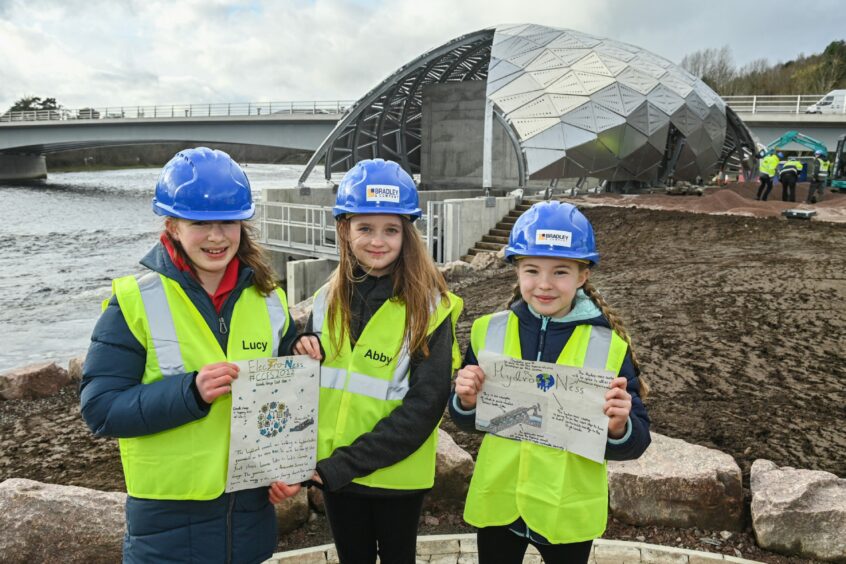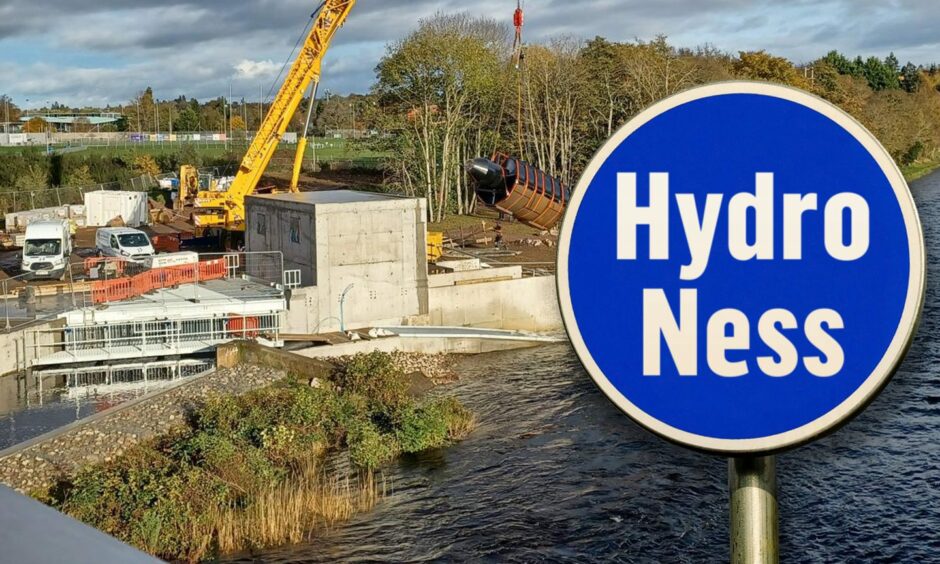Grace Mackenzie’s name will be remembered in Inverness for generations.
Or, at least, a name that she created will.
Grace, a pupil at Milton of Leys Primary School, won a Highlands-wide contest to choose a name for the new hydroelectric scheme on the River Ness.
Now officially named Hydro Ness, the site will supply green energy to the nearby leisure centre.
Officials say the plant could operate for more than 50 years and it could save the centre £70,000 in annual energy costs and cut carbon emissions.
The site will also serve as a visitor centre, where guests can see the generator at work and learn more about renewable energy.
Inspiration for the future
Once complete, the Hydro Ness scheme will supply power to the Inverness Leisure Centre.
And as part of her prize, Grace’s class gets to take part in a free activity at the centre with High Life Highland.
But for Grace, the real prize will be a tour of the finished product.
“I am really excited that my poster won the competition, we loved learning about the Hydro in class and designing the posters.
“We can’t wait to visit the Hydro Ness when it is open!”
When Highland Council launched the naming competition last year, they wanted pupils to highlight the Hydro Ness scheme’s main themes of sustainability, renewable energy, climate change and STEM education.
Out of more than 100 submissions, Grace’s name and her original poster captivated the judges.
The Council’s executive chief officer of infrastructure, environment and economy, Malcolm Macleod praised Grace for her timeless name and imaginative poster.
“Inspiring future generations is a key element of this project,” he said.
“We are thrilled with the creativeness displayed by all the pupils who took part in the competition.”
What’s Hydro Ness all about?
Last spring, Highland Council announced details about the Hydro Ness scheme. At its heart is an Archimedes Screw, a centuries-old technology that takes its name from Ancient Greek inventor Archimedes.
The weight of the water in the river will press on the blades and turn the screw, which powers the generator. And the blades will rotate slowly enough to let fish pass through unharmed.
The scheme could generate over 500,000kWh electricity annually, which will feed directly to the nearby leisure centre.
The leisure centre is one of the council’s highest-consuming buildings. Early estimates suggested the new plant could offset the centre’s spend by around £70,000. It could also reduce carbon emissions by 140,000kg C02e.
Read more from the Schools & Family team
Roof ripped off Banff Academy as longer-term damage to some schools becomes clear
Can bikes and free buses reduce Highland Council’s £18m school transport bill?


